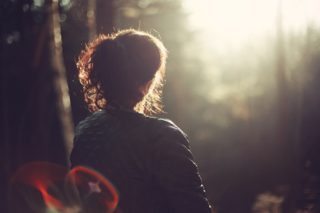Creativity
Is After School the Future of School?
Intrepid Academy at Hale provides a promising model for school-day innovation.
Posted November 8, 2018

When I present to educators, I often end with a question: Could great after school education become the model for the school day of the future? Of course, this is a provocative question. Schools have requirements that after school programs do not. But if after school programs build innovative learning experiences in STEM or other content areas that young people gravitate to—even love—I think the answer to this question should be an emphatic “Yes.”
The boundaries between after school and school are already softening. Many schools share a focus on exploration, hands-on activities, and group work, and after school programs often take responsibility for enriching academic learning. But my question points to a more radical experiment: Can we build a school day that is founded on the idea of the whole child, identity development, and the exploration of how the world works? Can that happen in environments that don’t constrain students to the inside of buildings? And can students participating in this new, “flexible school,” show real academic gains?
It was only a matter of time before my question was no longer hypothetical. I recently visited such a school, the Intrepid Academy at Hale (IAH), a joint venture of Boston Public Schools (BPS) and Hale. The program is run by a group of innovators using after school principles in a new setting in collaboration with after school professionals and in-school educators. I was excited to meet with Executive Director Eric Arnold and Program Director Jerry Howland, a long-time veteran of the Boston Public School system, to learn more about this program.
At IAH, a diverse group of students from urban Boston spends a semester riding the bus to a large open space facility outside of Boston (on more than 1,100 acres of land) to engage in a nature-based learning experiment. When I visited on a rainy day in late spring, I was not sure what I was to expect. The classrooms are in log cabin type buildings set right in the middle of wooded land. Teachers and after school professionals worked together to give these students the kind of transformative experience – akin to an expensive independent school run in the mountains of Vermont or the shores of Maine – that would be out of reach for most of these students if it wasn't for IAH (for example, the Mountain School in Vermont costs $29,780 for one semester).
I went to a classroom and sat next to a young man. He was working on a project on energy sources, as were other groups of students. When I asked what he was working on, he proudly showed me his work and explained: “I’m ADD and could never concentrate. But now I am. I’m getting into things, but I’m not doing this in a group because I get distracted. Being here in nature has been so good for me. It is hard to think about leaving.”
Two young women, Alissa and Casey* were willing to answer my many questions. They were extremely honest and told me that when they first arrived it was the dead winter and snowing. They both wanted to leave and go home. Their first nature walk was “just miserable!” This was not for them. Alissa said she did not want to come in the first place and needed a lot of convincing to even try. She thought of herself as shy and introverted and not cut out for nature’s adventures.
But it did not take long for an appreciation to set in and give way to a deep satisfaction. Both young women felt really transformed and told me that anyone I talked with would tell me a similar story. Both felt that learning in nature was just fundamentally different. They began loving everything about it, even the snow, rain, and wind. Alissa began running and had a favorite path through the sprawling land. Casey was especially drawn to the classes that asked questions about the cosmos, the big bang theory, and the ability to see the stars in ways never seen in the city. Both girls loved being with their classmates and had a bond that was never possible at their city high school.
Did this change their overall high school experience? For sure, when the program ended they would miss the nature and the strong bonds with teachers and staff. After understanding what school can be like, it was hard for them to imagine going back to their old building. And what about college? They admitted they never thought much about it before, but now, they definitely would love to go to a college away from the city. They were also really interested in science and the environment. “I’m so much clearer now,” Casey said. Alissa thought for a moment, then answered: “This—looking around the trees, the chipmunk that was playing in front of us, and the sky,” she pointed around her, “This is what I want to do.”
I felt so good about what these students shared, but I was also upset: Why are we not making this experience available to all children and youth? When I was a child, I attended a school in the mountains near Heidelberg in Germany that was created as part of an educational reform effort. I understand the powerful experience of being away from home, the feeling that the world is opening up for you in new ways, and the deep bonds that can form with your fellow students, teachers, and nature itself. That experience helped turn me into a life-long learner. When I arrived at Hale, I was immediately flooded with memories that became more intense when I talked to the students. They were all describing what I had felt, the magic of learning.
Can we create learning environments that are academically rigorous, increase motivation for future learning, help students clarify career interest, and create a joy for learning? Yes. IAH is one answer to this fundamental question. We need more like it. It is not the only answer, many will say it’s not realistic – students and teachers belong in a school building – but the transformation in education cannot be stopped. The boundary of school and where learning happens is already changing with advances in technology. To fully educate our students, academically, mentally, physically, spiritually, schools will have to look different than they do now. By giving students a place in nature to have a physical and emotional learning experience, IAH shows us the power of what’s possible.
*Names changed




